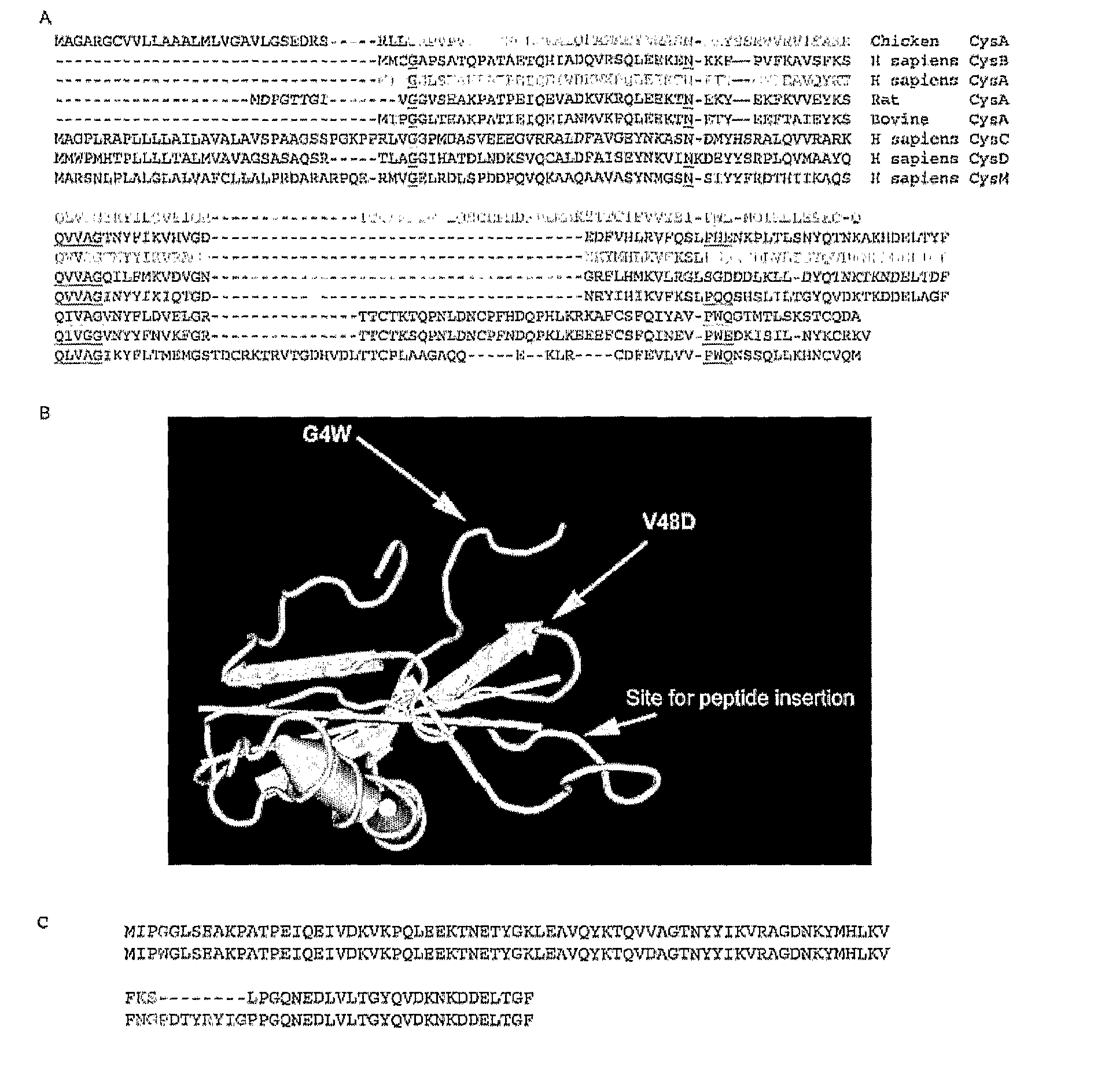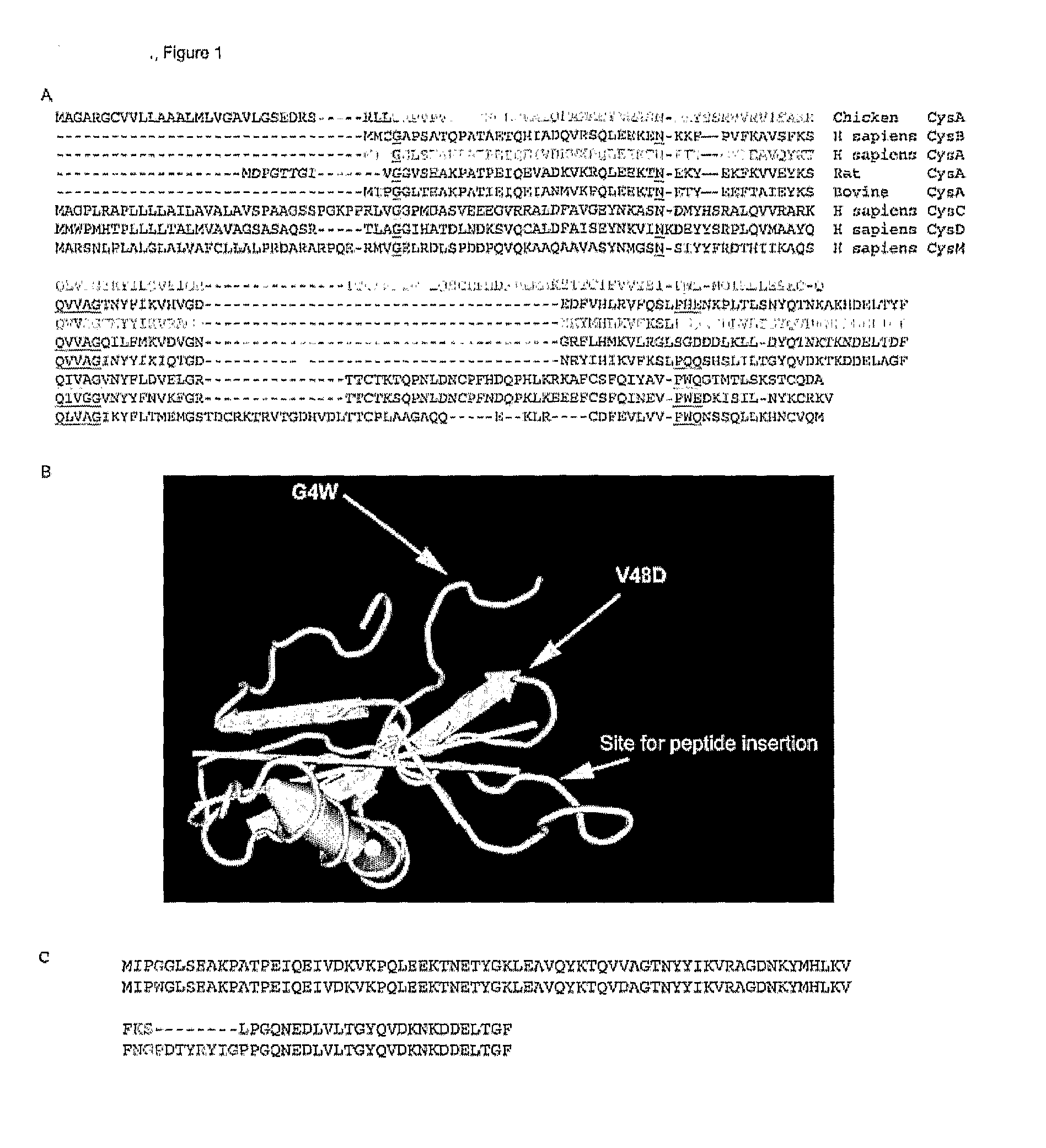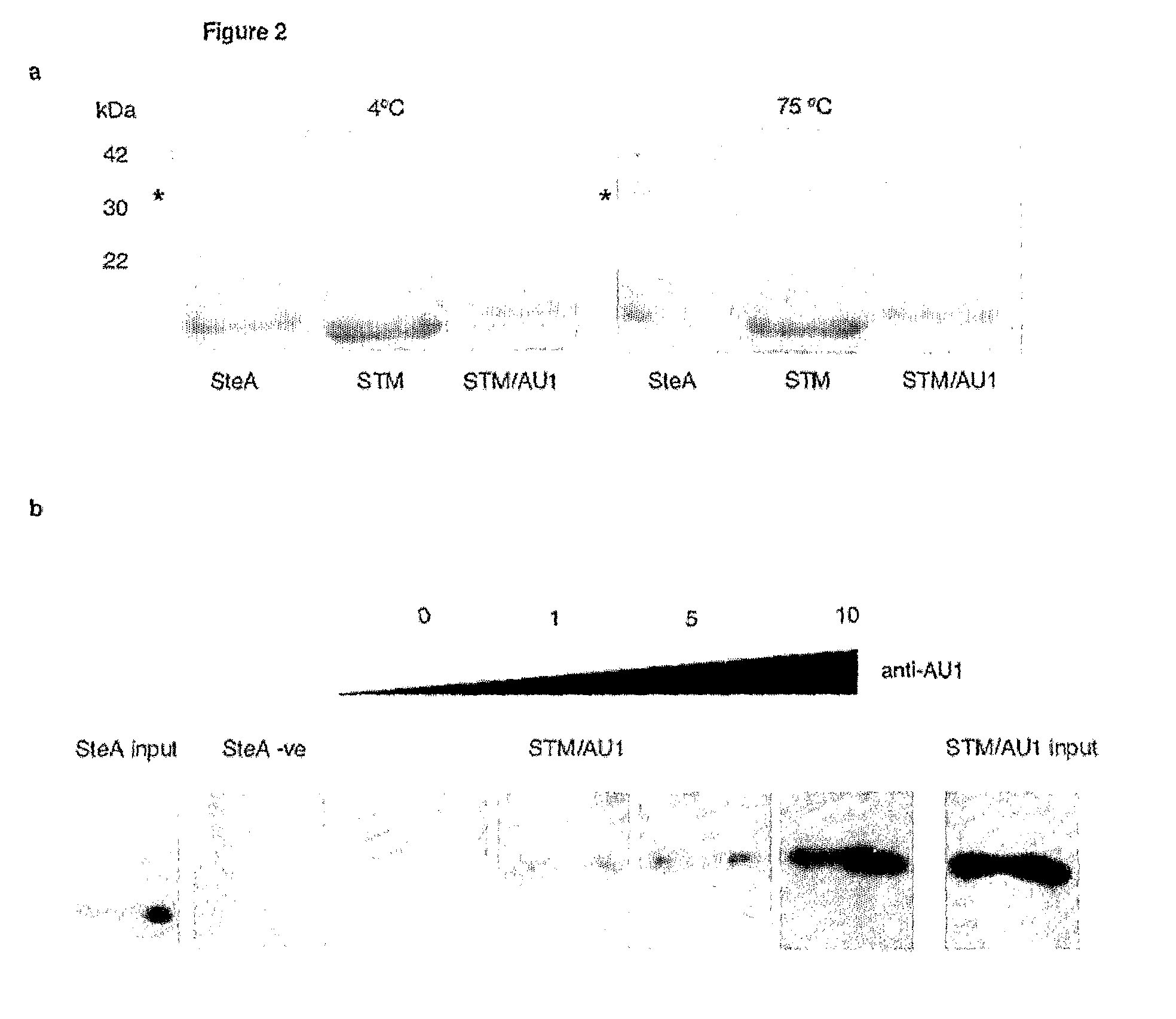Scaffold
- Summary
- Abstract
- Description
- Claims
- Application Information
AI Technical Summary
Benefits of technology
Problems solved by technology
Method used
Image
Examples
example 1
Use of Stefin A as a Scaffold Protein
[0124]FIG. 1 shows the primary amino acid structure of parts of Stefin A and its homologues. FIG. 1b shows three dimensional structure of Stefin A. FIG. 1b also shows the three sites in Stefin A which are mutated in order to facilitate its use of the scaffold protein. These are G4W, V48D and Leu 73 which is shown as ‘site for peptide insertion’ in FIG. 1b.
[0125]A Stefin A polypeptide for use as a scaffold protein is produced by mutating the sequence of Stefin A as described. The resulting protein based on Stefin A but possessing those three mutations is termed STM. The sequence of STM is given in the attached sequence listing.
[0126]FIG. 2a shows the heat stability of STM. As can be seen from FIG. 2a, STM is stable to 70° C., where it starts to unfold. Unfolding is complete at 98° C., but STM refolds to its correct form upon cooling to 25° C. even when bearing a 20 amino acid target peptide insertion.
[0127]FIG. 2b demonstrates that the scaffold p...
example 2
STM is Biologically Neutral
[0128]Stefin A is known to form dimers. Use of Stefin A as a scaffold protein advantageously abolishes dimerisation. As can be seen from FIG. 3, the STM scaffold protein has abolished dimerisation and is shown to be monomeric.
[0129]It is the V48D mutation which is responsible for the abolition of dimerisation. In some embodiments, it may be advantageous to retain dimerisation ability. For example, it may be useful to be able to heat shock the system and induce dimerisation of scaffold protein according to the invention. In this embodiment, the V48 amino acid should not be mutated. Thus in this embodiment the invention would relate to a double mutant Leu 73 and G4W. This scaffold protein would still advantageously allow a dual surface approach and offers the additional benefit of a heat inducible dimerisation. One application of such a scaffold protein would be in investigating mode of action within a signalling pathway. For example, by inserting two differ...
example 3
Demonstration of Use of Stefin A as a Scaffold Protein
[0132]There are a number of known CDK2 binding peptide aptamers in the art. Some of these peptide aptamers are known to inhibit CDK2 activity. In order to demonstrate utility of the invention, some of these aptamers have been compared in the setting of a Stefin A based scaffold protein according to the present invention and in the setting of the prior art scaffold protein such as thioredoxin A.
[0133]Considering FIG. 6, it can be seen that results achieved with Stefin A can be different to those achieved with the prior art scaffold thioredoxin A. This demonstrates that three dimensional peptide space can be explored using Stefin A based scaffolds which cannot be explored using TrxA based scaffolds.
PUM
| Property | Measurement | Unit |
|---|---|---|
| Fraction | aaaaa | aaaaa |
| Fraction | aaaaa | aaaaa |
| Fraction | aaaaa | aaaaa |
Abstract
Description
Claims
Application Information
 Login to View More
Login to View More - R&D
- Intellectual Property
- Life Sciences
- Materials
- Tech Scout
- Unparalleled Data Quality
- Higher Quality Content
- 60% Fewer Hallucinations
Browse by: Latest US Patents, China's latest patents, Technical Efficacy Thesaurus, Application Domain, Technology Topic, Popular Technical Reports.
© 2025 PatSnap. All rights reserved.Legal|Privacy policy|Modern Slavery Act Transparency Statement|Sitemap|About US| Contact US: help@patsnap.com



